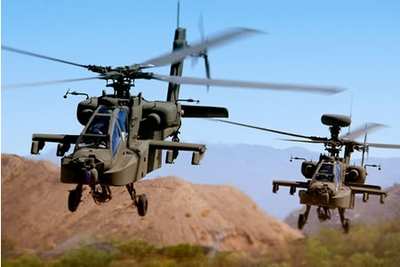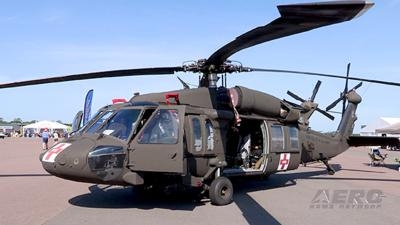Helicopter Operations Paused Following Spate of 2023 Accidents
U.S. Army Chief of Staff James McConville has grounded all Army aviators not currently involved in critical missions following a trio of 2023 helicopter accidents in which a total of 16 service-members have lost their lives.

In a statement, McConville set forth: “The safety of our aviators is our top priority, and this stand down is an important step to make certain we are doing everything possible to prevent accidents and protect our personnel.”
At McConville’s direction, U.S. Army aviators “will focus on safety and training protocols to ensure our pilots and crews have the knowledge, training and awareness to safely complete their assigned mission.”
U.S. Army spokesman Lieutenant Colonel Terence Kelley reported active-duty Army aviation units would be grounded until they completed training events slated to take place between 01 and 05 May. Army National Guard and Reserve units will have until 31 May to complete the requisite training.
The most recent mishap, and the one by which the aviation safety stand down was prompted, occurred on Thursday, 27 April and saw two AH-64 Apache attack helicopters assigned to the U.S. Army’s 1st Attack Reconnaissance Battalion, 25th Aviation Regiment collide in the vicinity of Healy, Alaska.
Of the four service-members involved in the aforementioned collision, two expired at the crash-site, a third succumbed during transport to a Fairbanks hospital, and the fourth suffered injuries of unknown severity.
The names of the deceased have yet to be disclosed, as does the accident’s cause.
Speaking to the subject of the tragedy, Major General Brian Eifler, commanding general of the Army’s 11th Airborne Division, stated: "This is an incredible loss for these soldiers’ families, their fellow soldiers, and for the division. Our hearts and prayers go out to their families, friends, and loved ones, and we are making the full resources of the Army available to support them."
The accident was the second suffered by Alaska-based U.S. Army helicopter units this year.
On 05 February, two soldiers were killed in a U.S. Army AH-64D rollover accident in Talkeetna, Alaska, an historic hamlet 67-nautical-miles north of Anchorage.
On 15 February, two more service-members lost their lives when a Black Hawk helicopter assigned to the Tennessee National Guard went down during a training flight just outside of Huntsville, Alabama. The accident, which occurred at approximately 15:00 EST, saw the aircraft impact ground and catch fire along Alabama’s Highway 53. No ground injuries were reported.

In a statement, the Tennessee National Guard reported the Black Hawk had been approaching Huntsville Executive Airport (MDQ) “when the aircraft rapidly descended and impacted the ground.”
Army officials stated the pilots of the lost Black Hawk were experienced aviators, each having served more than a dozen-years in the military.
Less than two months later, nine soldiers were killed when two U.S. Army Black Hawk helicopters went down approximately 26-nautical-miles northeast of Fort Campbell, Kentucky during a 29 March nighttime medical evacuation drill. Notwithstanding the accident’s close proximity to a residential area, no ground injuries were reported.
Apache and Black Hawk helicopters are among the models analyzed in a recent U.S. Government Accountability Office (GAO) report pertaining to Army and Air National Guard accidents over the period spanning 2012 through 2021. The GAO, in addition to numerous peripheral recommendations, suggested National Guard helicopter units continuously update risk management worksheets and remove barriers to pilot training. What barriers, precisely, remains unclear.
 NTSB Final Report: Cozy Cub
NTSB Final Report: Cozy Cub ANN FAQ: Contributing To Aero-TV
ANN FAQ: Contributing To Aero-TV Classic Aero-TV: Seated On The Edge Of Forever -- A PPC's Bird's Eye View
Classic Aero-TV: Seated On The Edge Of Forever -- A PPC's Bird's Eye View ANN's Daily Aero-Linx (04.29.25)
ANN's Daily Aero-Linx (04.29.25) ANN's Daily Aero-Term (04.29.25): Execute Missed Approach
ANN's Daily Aero-Term (04.29.25): Execute Missed Approach




